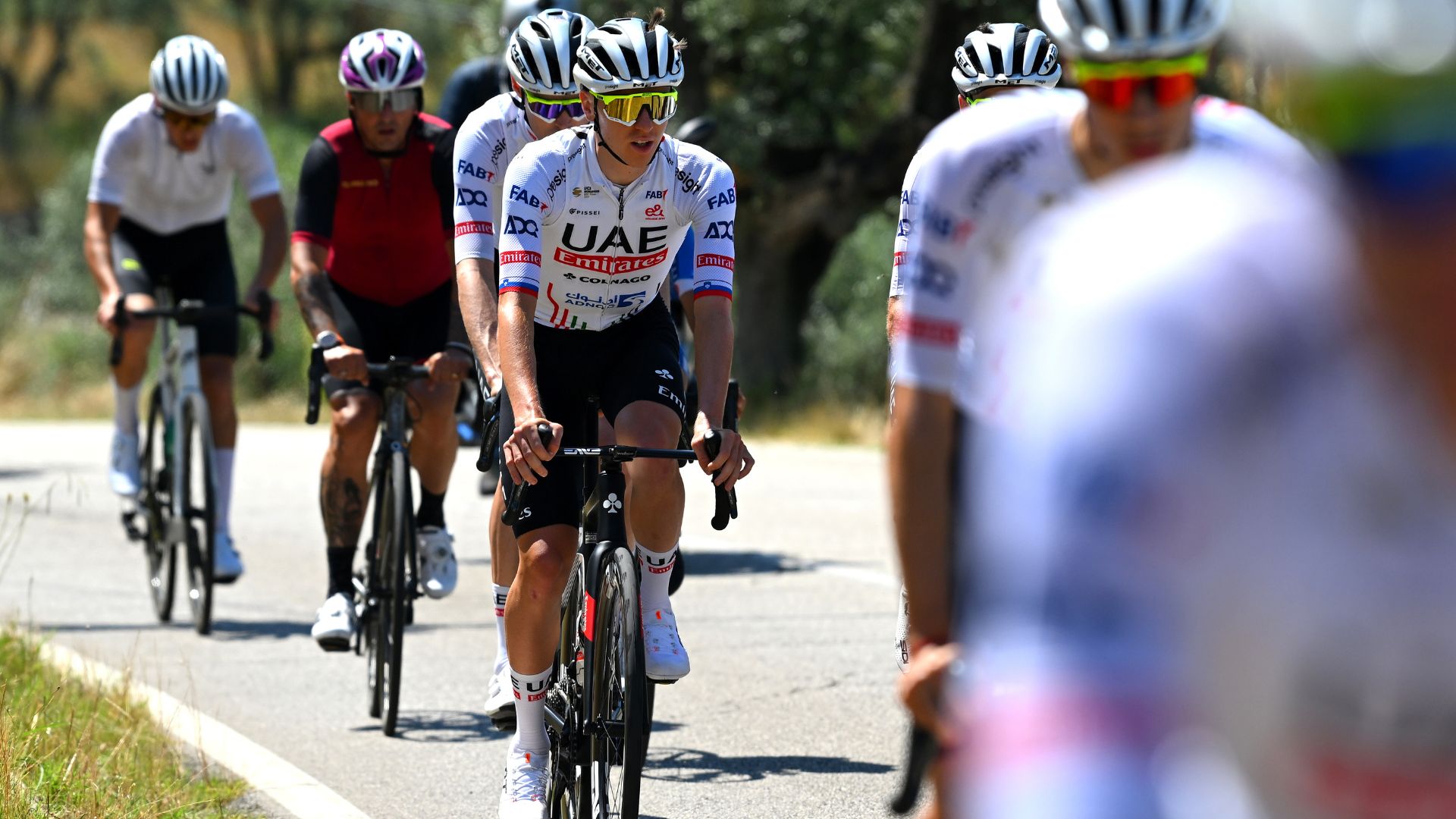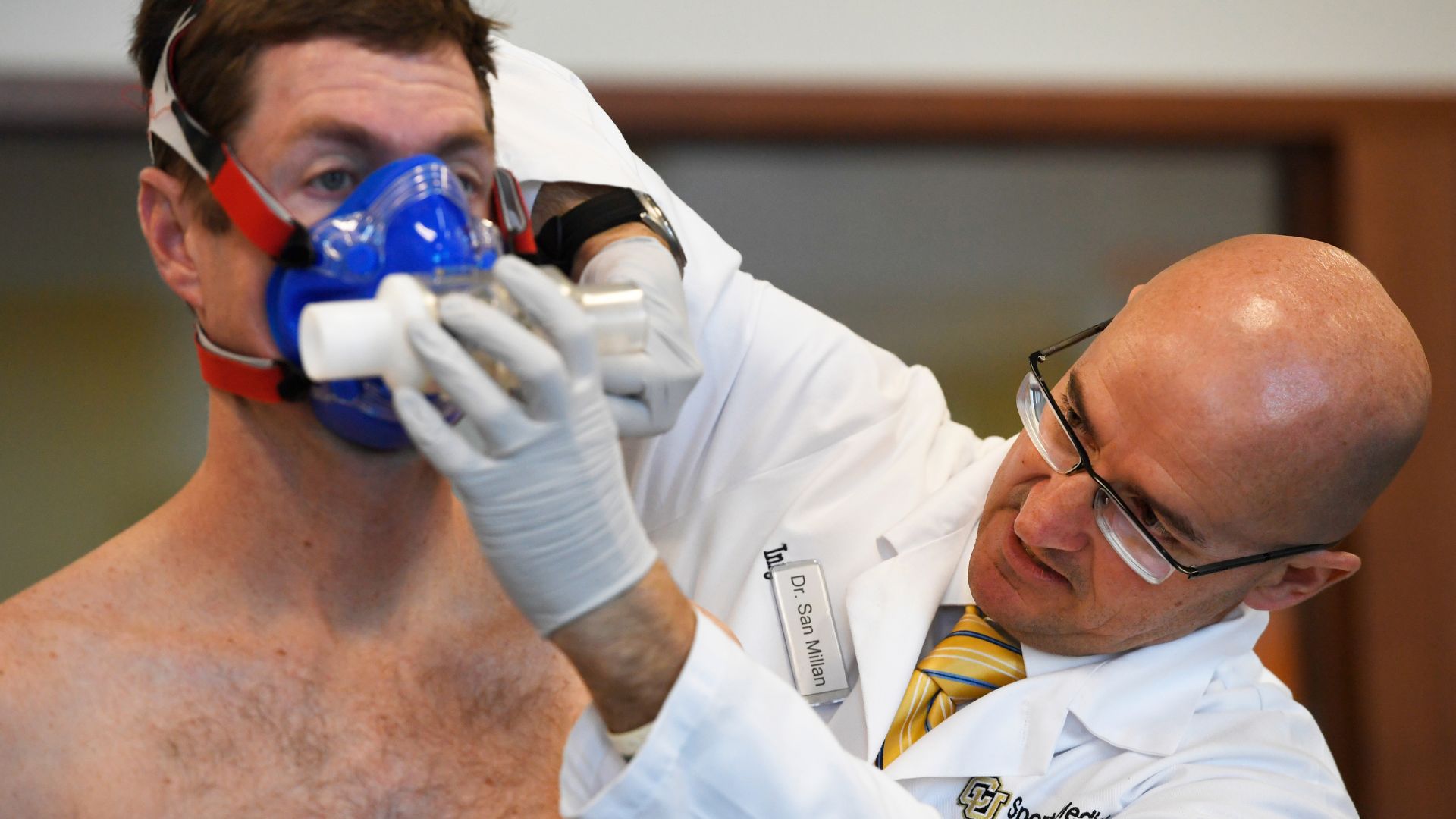
The 111th edition of the world-famous Tour de France starts June 29 in Florence, Italy. This year, the grueling 21-stage bike race takes place over 2,175 miles (3,500 kilometers) across Italy and France.
Slovenian rider Tadej Pogačar of UAE Team Emirates is widely considered the favorite to win, having won the yellow jersey in 2020 and 2021 and finished second the past two years. Part of Pogačar's success comes down to Iñigo San Millán, who coached the champion cyclist for years as UAE Team Emirates' head of performance.
But in addition to being an expert in sports performance, San Millán has a second passion: He's hunting for new ways to beat cancer.
As a professor of medicine at the University of Colorado School of Medicine, San Millán has studied the interactions of cancer and lactate, a byproduct released by cells during regular metabolism — and in particular, by muscle cells during intense exercise like cycling. While elite athletes' bodies easily flush that lactate out of their systems, in people with cancer, tumors release huge amounts of lactate that then sticks around, spurring on the cancer. San Millán is investigating how to disrupt this vicious cycle.
Live Science spoke with San Millán about his double life as sport performance coach and cancer researcher, discussing his work in both spheres.
Related: Exercise may reverse sign of aging by 'flushing' fat from muscle
James Witts: What does the role of head of performance in elite sport involve?
Iñigo San Millán: Years ago, you'd have to do a bit of everything. Now, you have the resources to recruit excellent coaches, nutritionists, biomechanics, psychologists … and then it's about coordinating and integrating them as seamlessly and productively as possible.
I've been very fortunate over the last 25-plus years to work in multiple sports. ... If you focus on one sport, you might get blindsided by developments elsewhere. That said, cycling's arguably the most advanced sport when it comes to understanding a sportsman.
JW: What does that understanding comprise of?
ISM: You must understand the physiology and metabolism of the rider, before moving into the fields of nutrition, biomechanics and training. You then establish season goals and monitor the riders during competition.
Everyone responds differently to training. Someone like Pogačar can absorb a high workload. But if we give his training plan to someone else, it might kill them. You must understand who you are working with.
JW: Why do you head to altitude to train?
ISM: There are two key adaptations to training at altitude that then transcend to racing at both sea level and in the mountains. The first one is around boosting your hematological values, especially your red blood cells. Red blood cells are the taxi of oxygen, while hemoglobin [acts as the] the seats in which the oxygen sits. At altitude, the rarefied air forces your body to produce more red blood cells.
Related: What's the highest place on Earth that humans live?
As one gram of hemoglobin carries around 1.36 milliliters [0.05 fluid ounces] of oxygen, you can then generate stronger performances at the next race. You also have an angiogenic response, which is the formation of new blood vessels and again helps the transportation of oxygen to the working muscles.

JW: What do you measure physiologically when it comes to riders like Pogačar?
ISM: Firstly, you establish physiological and metabolic parameters of each athlete in order to prescribe the most accurate and progressive training program. You need to evaluate the athlete. Do we have a Ferrari or a Fiat? You identify their weak and strong points. In my system, factors like lactate variances, lactate metabolizing, fat metabolism and carbohydrate metabolism are very important. With the evaluation of these parameters, it's possible to establish an appropriate individual training program for an athlete. And all of this is achieved thanks to metabolomics [the study of chemical processes involving metabolites, small molecules made during or used for cell metabolism].
JW: Tell us about your metabolomic work in cycling.
ISM: With a few drops of blood, we can analyze between 1,000 and 2,000 parameters of the body and so understand how the body functions at a level that we've never seen before in cycling. Mitochondrial function, cell oxidation, glycolysis, anaerobic capacity, catabolic capacity … We can identify differences between cyclists and see what makes a truly elite athlete.
We had Pogačar and 20 other riders at UAE Team Emirates undertake a 15-minute warm-up at a low intensity of 2 watts per kilogram [w/kg] of bodyweight. Intensity cranked up by 0.5 w/kg every 10 minutes. Power output, heart rate and lactate were measured throughout the test, including at the end when the riders were exhausted. We discovered that [the] lactate-clearance capacity of the stronger riders was incredible.
JW: What does "lactate-clearance capacity" mean?
ISM: When a rider's sprinting or climbing, they generate a huge amount of lactate. We call this "highly glycolytic." The problem is, the more your muscles use glucose, the more lactate is produced because it's a byproduct of glucose utilization. This lactate builds up, and hydrogen ions associated with lactate increase acidosis [a build-up of acid] of the muscle microenvironment, decreasing contraction capacity and power output. That's why it's critical to clear that lactate.
One of the measurements I take is for lactate to see how quickly the lactate levels recover after a hard effort. With Pogačar, I noticed that his lactate recovery capacity was huge. His levels would return to normal after 2 minutes, while some riders took 20 minutes. That's a great advantage when you're attacking a climb as you can keep on attacking. It's been shown that world-class athletes produce more because they have a higher glycolytic capacity and can also clear it more proficiently. Well, Pogačar has one of the greatest glycolytic capacities I've ever seen.
Related: Workout in a pill: Scientists move one step closer to an exercise-mimicking drug
JW: When did you start to see your metabolomic work pay off at races?
ISM: I remember the Vuelta a España of 2019. Many thought we were crazy to have a 20-year-old [Pogačar] lead the team in his first three-week stage race. Many said he was there for experience and that after 10 or 12 days he'd go home.
But we knew different. We knew from his blood parameters that he could not only recover quickly between in-stage efforts but between stages, too. No one improves during a race of that length, but it's about reducing the decrement in performance. And that's what Pogačar managed, and why the three stage wins he bagged all came in the second and third weeks.
JW: Your work in sports is just one hat you wear. You're also involved in cancer research. Tell us about this, please.
ISM: We can see with riders like Pogačar how well they clear out lactate. Well, through my clinical work we know that cancer burns through glucose, creating huge amounts of lactate. But unlike when exercising, that lactate isn't cleared. This is bad for the cell and is a key driver of carcinogenesis [the formation of cancer].
With our work we're looking to reprogram a cancer sufferer's metabolism by, among many options, blocking the enzyme that produces lactate. We have a new study under review where we've silenced the enzyme that produces lactate, LDHA, and we can see that in 6 hours, EGFR is not expressed [made by the cells]. EGFR is a protein mutated in many cancers, and also the "mother" of the key signaling pathways that are mutated in most cancers, which increase cellular growth and proliferation of cancer cells. By inhibiting lactate production, we can inhibit EGFR production and so should be able to inhibit the signaling pathway cascade initiated by EGFR.
We're proving that this is a new door to understand cancer better and cornering it someday.
Related: What happens to cancer cells when they die?
JW: Tell us about the importance of mitochondria to both sporting performance and general health.
ISM: When you train a rider, you're looking for both central and local adaptations. The central adaptations are cardiorespiratory adaptations, so things like increasing blood volume, reduction in heart rate, enhanced sweating response … It's important but, at this level, it's the local adaptations at a cellular level that are the gamechangers. Things like mitochondria efficiency. [Mitochondria are small structures in cells that make chemical energy.]
It's not about how much oxygen you can deliver to the cells, it's about how well that oxygen is utilized by the cell and how the different fuels and substrates are utilized by mitochondria. Someone like Pogačar can burn fat at a high intensity in his furnace of mitochondria, which is a great advantage as you have huge stores of fat. The really hard efforts demand greater carbohydrate use but their stores are sparing in the body — so if you can ride hard using fat stores, well, to my mind this is where the great cyclists differ from the good.
When talking about general health … Cardiometabolic diseases, like cardiovascular diseases, type 2 diabetes and even Alzheimer's, which will soon be called "type 3 diabetes," shows one thing in common: mitochondria dysfunction. They can't burn glucose efficiently, meaning glucose builds up, giving rise to insulin resistance and eventually type 2 diabetes. The same things happen with fat. You can't burn it properly, it builds up, leads to inflammatory responses and ultimately cardiovascular disease, weight gain.
JW: Finally, beyond your wish to win the 2024 Tour de France, what does the future hold?
ISM: Sadly, I've recently closed my lab in the U.S. It's been heartbreaking as I haven't been able to finish all the experiments that I'd started, experiments where we'd made important findings with the hope to open new doors in terms of treatment against cancer or at least a better understanding of its metabolism.
Thankfully, a reputed cancer researcher in the top research institute in the Basque Country has the technology and resources to help me conclude my experiments. Now with time and no great rush, I should be able to finalize my experiments and contribute to opening new doors.
Editor's note: This interview has been condensed and edited for clarity.
Ever wonder why some people build muscle more easily than others or why freckles come out in the sun? Send us your questions about how the human body works to community@livescience.com with the subject line "Health Desk Q," and you may see your question answered on the website!







